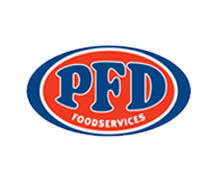Neural Networks
Neural networks are a type of machine learning algorithm that are inspired by the structure and function of the brain.
Neural networks, a powerful tool to make sense of data, have become increasingly popular in recent years. They offer an effective way for machines to learn from large amounts of data and apply this knowledge to improve the accuracy of its decisions. This article will discuss how neural networks work and explain why they are becoming more widely used today.
The ability for neural networks to accurately identify patterns within vast amounts of data is what makes them so appealing. Through the use of interconnected layers that communicate with one another, these systems can take raw inputs such as images or audio signals and produce meaningful results by classifying objects, detecting anomalies, predicting trends, and many other tasks.
By combining deep learning algorithms with advanced computing power, neural networks provide unprecedented levels of performance when compared to traditional methods of pattern recognition. The resulting models are capable of extracting complex features from datasets that would otherwise be too difficult for humans alone to understand. As such, they promise greater insights into our world than ever before—insights that could soon revolutionise industries ranging from healthcare to finance.
What Is Neural Network In Simple Words?
Neural networks are a type of artificial intelligence used for deep learning and machine learning. A neural network is composed of neurons that have weights, which can be fine-tuned using algorithms such as gradient descent or logistic regression to optimise the performance of the model.
A feed forward neural network is essentially an interconnected group of nodes, organised in layers, where each node is connected to one another within their layer and following layers. Each connection has its own weight, while all inputs from input layer are multiplied by those weights before being passed on to the next layer. The output values after passing through all these layers are compared with actual outputs using mean squared error metric, which helps in determining how well the model performs.
Multi Layer Perceptrons (MLP) and Recurrent Neural Networks (RNN) are two types of architectures commonly used when creating neural networks. MLPs take a set of inputs, pass it through several hidden layers and produce final output based on them; whereas RNNs use loops so that information from previous steps can be included in predicting future outcomes. Both architectures allow us to create models capable of solving complex problems related to natural language processing, image recognition or time series analysis tasks.
What Are Neural Networks Used For?
Neural networks are a type of computing system that mimics the way biological brains work. They use layered nodes, or neurons, to process data and make decisions. Each neuron is connected to multiple other neurons in various hidden layers, with an input layer taking information from outside sources and an output layer providing results. The idea behind neural networks is that as more data is processed by these pathways, the system improves its understanding of relationships between inputs and outputs.
Activation functions determine how each node processes incoming signals from other neurons within the network. These activation functions can be designed using algorithms such as back-propagation to adjust the weights and biases associated with each node so that the desired outcome is achieved when all signals have been sent through their paths. When this occurs, the result is a multi-class classification problem where items are grouped into separate classes based on similarities among them. Convolutional Neural Networks (CNNs) are also used for image recognition purposes due to their ability to capture patterns within images, which makes them highly reliable for computer vision tasks.
This type of technology has become increasingly popular in recent years due to its potential applications ranging from medical diagnosis to robotics control systems. It offers advantages over traditional methods of programming robots because it makes use of large amounts of data available online rather than relying solely on user inputted parameters. Furthermore, deep learning techniques allow machines to learn complex concepts more rapidly than would otherwise be possible, thus revolutionising many aspects of our lives today.
What Are The 3 Different Types Of Neural Networks?
Neural networks are a type of artificial intelligence that can learn to recognise patterns, generalise from data, and be trained to perform tasks. Neural networks have been increasingly used in recent years for various applications such as image recognition, multi class classification, and other predictive analytics related tasks. There are three main types of neural networks: feed-forward neural networks, recurrent neural networks (RNNs), and convolutional neural networks (CNNs).
Feed-forward neural networks are the most commonly used type of network structure due to their simplicity; they consist of input nodes which take inputs from the environment and output nodes which produce outputs based on these inputs. The connections between different layers form a directed graph with weights associated with them. During training, an algorithm modifies the weights according to a cost function so that the predictions made by the model become more accurate over time. Feed-forward nets are typically used for supervised learning tasks like regression or binary/multi-class classification problems.
Recurrent neural networks (RNNs) differ from traditional feedforward models in that they allow information to flow through cycles within a given layer. This allows RNNs to store temporal dependencies among consecutive observations and use this information while making predictions about future events or states. RNNs are often used in natural language processing (NLP) and speech recognition problems where there is need for understanding sequential data. Additionally, RNNs can also be extended into deep architectures called long short-term memory (LSTM) units which enable better contextual understanding of longer sequences than regular RNN structures do not support well.
Finally, convolutional neural networks (CNNs) are another type of architecture specifically designed for computer vision problems such as object detection or image segmentation tasks where spatial relationships between pixels can help identify objects in an image better than other approaches such as hand crafted features would permit. CNNs direct their attention towards certain regions of an image using filters instead of analyzing each pixel individually like what happens when we use standard classical computer vision techniques like SIFT or SURF algorithms for feature extraction purposes before feeding it into a machine learning algorithm. Furthermore, CNNs offer significant speedups during training compared to conventional methods since they only require one pass through the entire dataset unlike other approaches which may require multiple passes depending on how complex the task is at hand.
In sum, there are three major types of neural network structures that are currently being explored - feedforward networks, recurrent neural networks (RNNs), and convolutional neural networks (CNNs); each having its own advantages and disadvantages suited for specific domains such as computer vision or natural language processing activities respectively. While all three share similarities with respect to functioning similarly to how neurons interact inside our human brain; careful consideration must be taken when selecting amongst any particular type depending on factors such as accuracy vs speed tradeoff requirements needed prior to embarking upon any kind of project involving Artificial Intelligence technology solutions development process utilizing either one alone or combination thereof depending on application complexity demands accordingly.
What Is A Neural Network Example?
Neural networks are a type of computational model inspired by biological neural systems. They utilize deep learning algorithms to create a machine-based approach that is capable of pattern recognition, image classification and other complex tasks. Neural network architectures include feedforward networks, recurrent networks, convolutional neural networks for computer vision, and autoencoders among others. These models can be used to build powerful predictive and decision-making applications.
A basic example of a neural network includes input nodes which accept a set of data points as inputs, weighting functions which assign importance to specific features within the data sets, and activation functions such as softmax or sigmoid which determine the output from each neuron in the architecture. This chain reaction helps to identify patterns and classify information accordingly. For instance, an image classification task would involve feeding images into the input layer where they are assigned weights based on their similarity with different classes before being processed through an activation function like softmax to decide the final prediction for the image class label.
Essentially, this process allows machines to learn how to recognize patterns without explicit programming instructions but rather through iterative training sessions on large datasets. The end result is that these types of neural network models can accurately predict outcomes across many domains including natural language processing (NLP), computer vision, speech recognition and more.
What Is The Most Common Neural Network?
Neural networks are a type of artificial intelligence system that can be used to solve complex problems. They are composed of interconnected nodes, called artificial neurons, and these neurons use the dot product of the input data to generate an output. Neural nets have been widely used in applications such as facial recognition and neural information processing systems. The most common type of neural network is the radial basis function (RBF) network, which uses softmax activation functions to determine the outputs for given inputs.
The RBF network has several advantages over other types of neural networks. For example, it allows more efficient training than traditional feed-forward architectures by making use of prior knowledge about the problem space. This means that fewer parameters need to be adjusted during training, leading to faster convergence and better accuracy on unseen test sets. Additionally, RBF networks are less prone to overfitting since they do not rely heavily on large numbers of weights or parameters like some deep learning models do. Finally, because RBF networks require minimal tuning and no explicit feature engineering, they can be applied quickly and easily to new datasets without requiring long periods of research or optimization.
In summary, the Radial Basis Function Network is one of the most commonly used types of neural networks due its efficiency with training data, low risk for overfitting, fast application process and lack of extensive parameter tuning requirements.
Conclusion
Neural networks represent a powerful tool for solving complex tasks. They are able to capture non-linear relationships between different variables and can be used in a wide range of practical applications. Neural networks consist of three main components: input nodes, hidden layers, and output nodes. The most commonly used neural network is the multilayer perceptron which consists of several interconnected neurons that process information by passing it through multiple layers. An example application of this type of neural network would be image recognition where it identifies objects from an image or video feed.
The success of neural networks relies on their ability to learn patterns from data inputs and respond accordingly with useful outputs. This makes them particularly suitable for use in areas such as machine learning, computer vision, natural language processing, robotics and many more fields where accurate predictions are required based on large amounts of data. Furthermore, advances in deep learning have made these models even more efficient at performing tasks than ever before.
In conclusion, neural networks offer great potential for problem solving due to their effectiveness at adapting to new situations and finding optimal solutions while relying on minimal human intervention. As technology continues to evolve, so too do the possibilities within the field of artificial intelligence and machine learning which will open up a world of opportunities enabled by neural networks.
PREVIOUS NARROW AI GLOSSARY TERM
NEXT NARROW AI GLOSSARY TERM
Neural Networks Definition
Exact match keyword: Neural Networks N-Gram Classification: Neural Network Models, Deep Learning, Artificial Intelligence Substring Matches: Neural, Networks Long-tail variations: "Neural Network Models", "Deep Learning", "Artificial Intelligence" Category: Technology, AI Search Intent: Information, Research Solutions Keyword Associations: Machine Learning, Computer Science, Algorithms Semantic Relevance: Machine Learning, Computer Science, Algorithms Parent Category: Technology Subcategories: Neural Network Models Deep Learning Artificial Intelligence Synonyms: Machine Learning Computer Science Algorithms Similar Searches: Neural Network Models, Deep Learning Artificial Intelligence Geographic Relevance: Global Audience Demographics: Researchers IT Professionals Students Brand Mentions: Microsoft Azure IBM Watson Google Cloud Platform Amazon Web Services Industry-Specific Data : Overfitting Training Testing Backpropagation Commonly Used Modifiers : "Models", "Software", "Applications" Topically Relevant Entities : Machine Learning Computer Science Algorithms Neural network models Deep learning Artificial Intelligence Data Mining Predictive Analytics Image Recognition Natural Language Processing Speech Recognition Chatbots."Larry will be our digital expert that will enable our sales team and add that technological advantage that our competitors don't have."
Kerry Smith
CEO, PFD Foods
$1.6 billion in revenue 
"Lion is one of Australasia’s largest food and beverage companies, supplying various alcohol products to wholesalers and retailers, and running multiple and frequent trade promotions throughout the year. The creation of promotional plans is a complicated task that requires considerable expertise and effort, and is an area where improved decision-making has the potential to positively impact the sales growth of various Lion products and product categories. Given Complexica’s world-class prediction and optimisation capabilities, award-winning software applications, and significant customer base in the food and alcohol industry, we have selected Complexica as our vendor of choice for trade promotion optimisation."
Mark Powell
National Sales Director, Lion
"At Liquor Barons we have an entrepreneurial mindset and are proud of being proactive rather than reactive in our approach to delivering the best possible customer service, which includes our premier liquor loyalty program and consumer-driven marketing. Given Complexica’s expertise in the Liquor industry, and significant customer base on both the retail and supplier side, we chose Complexica's Promotional Campaign Manager for digitalizing our spreadsheet-based approach for promotion planning, range management, and supplier portal access, which in turn will lift the sophistication of our key marketing processes."
Richard Verney
Marketing Manager
Liquor Barons

"Dulux is a leading marketer and manufacturer of some of Australia’s most recognised paint brands. The Dulux Retail sales team manage a diverse portfolio of products and the execution of our sales and marketing activity within both large, medium and small format home improvement retail stores. We consistently challenge ourselves to innovate and grow and to create greater value for our customers and the end consumer. Given the rise and application of Artificial Intelligence in recent times, we have partnered with Complexica to help us identify the right insight at the right time to improve our focus, decision making, execution, and value creation."
Jay Bedford
National Retail Sales Manager
Dulux

"Following a successful proof-of-concept earlier this year, we have selected Complexica as our vendor of choice for standardizing and optimising our promotional planning activities. Complexica’s Promotional Campaign Manager will provide us with a cloud-based platform for automating and optimising promotional planning for more than 2,700 stores, leading to improved decision-making, promotional effectiveness, and financial outcomes for our retail stores."
Rod Pritchard
Interim CEO, Metcash - Australian Liquor Marketers
$3.4 billion in revenue 
"After evaluating a number of software applications and vendors available on the market, we have decided to partner with Complexica for sales force optimisation and automation. We have found Complexica’s applications to be best suited for our extensive SKU range and large set of customers, being capable of generating recommendations and insights without burdening our sales staff with endless data analysis and interpretation.
Aemel Nordin
Managing Director, Polyaire
"DuluxGroup is pleased to expand its relationship with Complexica, a valued strategic partner and supplier to our business. Complexica’s software will enable DuluxGroup to reduce the amount of time required to generate usable insights, increase our campaign automation capability, personalise our communications based on core metrics, and close the loop on sales results to optimise ongoing digital marketing activity."
James Jones
Group Head of CRM, DuluxGroup
"Instead of hiring hundreds of data scientists to churn through endless sets of data to provide PFD with customer-specific insights and personalised recommendations, Larry, the Digital Analyst® will serve up the answers we need, when we need them, on a fully automated basis without the time and manual processes typically associated with complex analytical tasks.”
Richard Cohen
CIO, PFD Foods
$1.6 billion in revenue 
"As a global innovator in the wine industry, Pernod Ricard Winemakers is always seeking ways to gain efficiencies and best practices across our operational sites. Given the rise of Artificial Intelligence and big data analytics in recent times, we have engaged Complexica to explore how we can achieve a best-in-class wine supply chain using their cloud-based software applications. The engagement is focused on Australia & New Zealand, with a view to expand globally."
Brett McKinnon
Global Operations Director, Pernod Ricard Winemakers
"70% - 80% of what we do is about promotional activity, promotional pricing -- essentially what we take to the marketplace. This is one of the most comprehensive, most complex, one of the most difficult aspect of our business to get right. With Complexica, we will be best in class - there will not be anybody in the market that can perform this task more effectively or more efficiently than we can."
Doug Misener
CEO, Liquor Marketing Group
1,400+ retail stores 
"The key thing that makes such a difference in working with Complexica is their focus on delivering the business benefits and outcomes of the project."
Doug Misener
CEO, Liquor Marketing Group
1,400+ retail stores 
"Australia needs smart technology and people, and it has been a great experience for me to observe Complexica co-founders Zbigniew and Matt Michalewicz assemble great teams of people using their mathematical, logic, programming, and business skills to create world-beating products. They are leaders in taking our bright graduates and forging them into the businesses of the future."
Lewis Owens
Chairman of the Board, SA Water 
"Having known the team behind Complexica for some years ago now, I am struck by their ability to make the complex simple - to use data and all its possibilities for useful purpose. They bring real intelligence to AI and have an commercial approach to its application."
Andrew McEvoy
Managing Director, Fairfax Media - Digital 
"I have worked with the team at Complexica for a number of years and have found them professional, innovative and have appreciated their partnership approach to delivering solutions to complex problems."
Kelvin McGrath
CIO, Asciano 
“Working with Complexica to deliver Project Automate has been a true partnership from the initial stages of analysis of LMG’s existing processes and data handling, through scoping and development phase and onto delivery and process change adoption. The Complexica team have delivered considerable value at each stage and will continue to be a valued partner to LMG."
Gavin Saunders
CFO, Liquor Marketing Group 
“Complexica’s Order Management System and Larry, the Digital Analyst will provide more than 300 Bunzl account managers with real-time analytics and insights, to empower decision making and enhanced support. This will create more time for our teams to enable them to see more customers each day and provide the Bunzl personalised experience.”
Kim Hetherington
CEO, Bunzl Australasia 
"The team behind Complexica develops software products that are at the cutting edge of science and technology, always focused on the opportunities to deliver a decisive competitive edge to business. It has always been a great experience collaborating with Matthew, Zbigniew and Co."
Mike Lomman
GM Demand Chain, Roy Hill Iron Ore 
"The innovations that the Complexica team are capable of continue to amaze me. They look at problems from the client side and use a unique approach to collaborating with and deeply understanding their customers challenges. This uniquely differentiates what they bring to market and how they deliver value to customers."
John Ansley
CIO, Toll Group 
"Rather than building out an internal analytics team to investigate and analyse countless data sets, we have partnered with Complexica to provide our sales reps with the answers they need, when they need them, on a fully automated basis. We are excited about the benefits that Larry, the Digital Analyst will deliver to our business.”
Peter Caughey
CEO, Coventry Group 
“Complexica’s Order Management System and Larry, the Digital Analyst will provide more than 300 Bunzl account managers with real-time analytics and insights, to empower decision making and enhanced support. This will create more time for our teams to enable them to see more customers each day and provide the Bunzl personalised experience.”
Kim Hetherington
CEO, Bunzl Australasia 
"After an evaluation process and successful proof-of-concept in 2016, we have chosen to partner with Complexica to upgrade the technological capability of our in-field sales force. The next-generation Customer Opportunity Profiler provided by Complexica will serve as a key tool for sales staff to optimise their daily activities, personalise conversations and interactions with customers, and analyse data to generate actionable insights."
Stephen Mooney
Group Sales Capability Manager, DuluxGroup
$1.7 billion in revenue
"After evaluating a number of software systems available in the marketplace, we have ultimately selected Complexica as our vendor of choice for sales force automation and CRM. Given the large SKU range we carry and very long tail of customers we serve, Complexica’s applications are best suited to deal with this inherent complexity without burdening our staff with endless data entry."
Nick Carr
CEO, Haircaire Australia
Australia's largest distributor of haircare products
“Asahi Beverages is Australia’s largest brewer, supplying a leading portfolio to wholesalers and retailers, including some of Australia’s most iconic brands. Last year Asahi Beverages acquired Carlton & United Breweries, which is its Australian alcohol business division. To harness the strength of our expanded portfolio, we partner with our customers to run multiple and frequent trade promotions throughout the year, delivering long-term growth for both our business and theirs. Given the inherent complexity in optimising promotional plans and our continued focus on revenue and growth management, we have selected Complexica as our vendor of choice after a successful Proof-of-Concept of its world-class optimisation capabilities.”
Kellie Barnes
Group Chief Information Officer
Asahi Beverages
"Dulux is a leading marketer and manufacturer of some of Australia’s most recognised paint brands. The Dulux Retail sales team manage a diverse portfolio of products and the execution of our sales and marketing activity within both large, medium and small format home improvement retail stores. We consistently challenge ourselves to innovate and grow and to create greater value for our customers and the end consumer. Given the rise and application of Artificial Intelligence in recent times, we have partnered with Complexica to help us identify the right insight at the right time to improve our focus, decision making, execution, and value creation."
Jay Bedford
National Retail Sales Manager, DuluxGroup
"At Liquor Barons we have an entrepreneurial mindset and are proud of being proactive rather than reactive in our approach to delivering the best possible customer service, which includes our premier liquor loyalty program and consumer-driven marketing. Given Complexica’s expertise in the Liquor industry, and significant customer base on both the retail and supplier side, we chose Complexica's Promotional Campaign Manager for digitalizing our spreadsheet-based approach for promotion planning, range management, and supplier portal access, which in turn will lift the sophistication of our key marketing processes."
Richard Verney
Marketing Manager, Liquor Barons


































